Results 1 to 7 of 7
-
6 December 2012, 12:03 #1
L-3 Ground Panoramic Night Vision Goggle
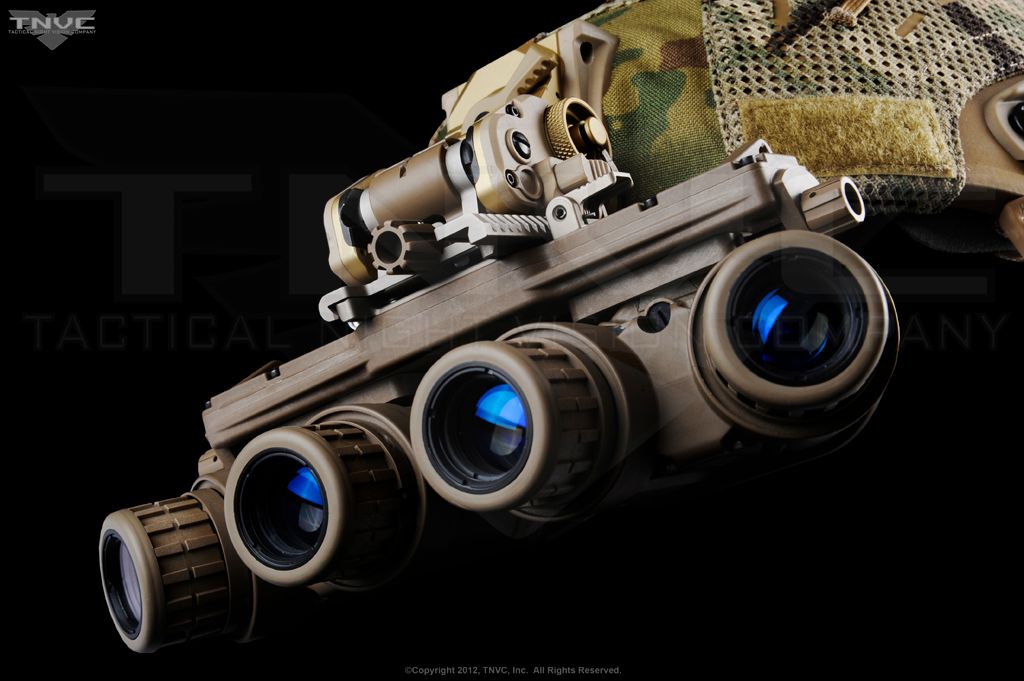
Night vision goggles offer operators an incredible advantage on the modern battlefield. The ability to observe and engage the enemy without them even being aware of your presence is a formidable weapon. Image intensification technology has come a long way since the massive tank-mounted “active IR” devices of World War II, becoming smaller, more portable, and advanced for the individual Warfighter. The Global War on Terror has accelerated the progress of night vision technology and its application. Hundreds of thousands of U.S. and Coalition troops have gone downrange wearing some of the most advanced and varied image intensifiers ever seen (or not seen as it were).
The onset of the war in Afghanistan and later, Iraq, has presented Warfighters with a myriad of combat zones that present different challenges to the operator under goggles. Wide open desert, high altitude mountains, urban areas, and even tropical zones all have different requirements. Enemy fighters have also quickly adapted to the good-guys’ strikingly more advanced technology. As enemy tactics evolved, so to has the equipment used to kill them. Night vision devices have begun incorporating fusion technology, traditional image intensifier technology with thermal overlays. Individual goggles have also begun incorporating awareness applications that help link the boots on the ground with the eye in the sky. These types of advancements have greatly increased the Warfighters’ ability to kill bad guys, ensuring he/she has the most information available to put them ahead of the power curve. But, even with all these advancements, night vision goggles are not magic and they do not automatically give the good guys super powers. As with all other weapon systems, it is paramount for the operator to know and understand the strengths and weaknesses of the device. Attempting to deploy a weapon system outside of its core competency can have disastrous results. Of course, this does not mean that Warfighters always play it safe. Let’s face it; this is dangerous work. We ain’t making cupcakes. By pushing the limits of available technology, operators are able to develop new TTP’s and help influence the development of new technology that better addresses ever developing field conditions.
One of the most notable limitations of current night vision goggles is the relatively small field of view (FOV) they offer. Traditional devices give the wearer a small 40° FOV. This is like viewing the world through a toilet paper tube. The image intensifier tube gives the wearer an almost day-like view in the darkness, but only through a confined objective. While this narrow FOV is very useable in many areas, it does require a lot of training to apply properly and safely. For instance, the operator must keep his/her head on the proverbial swivel, scanning constantly to take in as much of the environment as possible through the goggle. The scanning must be done in a smooth, controlled manner to avoid missing anything. Depth perception is also an issue. We have two eyes which allow us to achieve instant near to far focus changes and keep us from tripping over obstacles at our feet or trying to grab a door knob that is ten yards away. The ubiquitous AN/PVS-14, the standard issue NVG for U.S. Forces, has many benefits in a monocular configuration, but depth perception is not one of them. The world flattens out in the eye of a monocular-equipped operator. This is why pilots flying under goggles must wear dual-tube binoculars instead. It is also why Special Operations Forces (SOF) operators on the ground prefer running dual tubes. The ability to more quickly and safely traverse terrain and negotiate obstacles is incredibly beneficial to the high speed nature of SOF missions. But, regardless of whether the wearer is running one tube or two, they are still limited by a 40° FOV.
While the 40° FOV can be used very effectively with lots of training, there are certain applications where it just is not a good idea. One of the main things would-be operators need to understand is when to forego the advantage of night vision goggles in favor or traditional white light. Running goggles is not anything like the movies where a technology-covered super operator kicks in the door or rappels through the window wearing a goggle and quickly clears a complex of enemy fighters inside and out, all while seeing the world as if conditions were normal. The fact is; Close Quarters Battle (CQB) is not a good place to run you’re AN/PVS-14 or other traditional goggle. It is just way too fast with operators needing to instantaneously take in every detail of a room, process the information as they move to their point of domination in the room and cover their sector, all while identifying possible threats, determining if they are threats, and taking appropriate action. The idea is to get as many guns into the room and completely dominate the situation with overwhelming force. And, operators can only do that by taking in the most information in the shortest amount of time; often fractions of a second. The bottom line is that bad guys need to be processed within seconds of a team entering a room and this is almost impossible to do safely under traditional goggles because the amount of information taken in
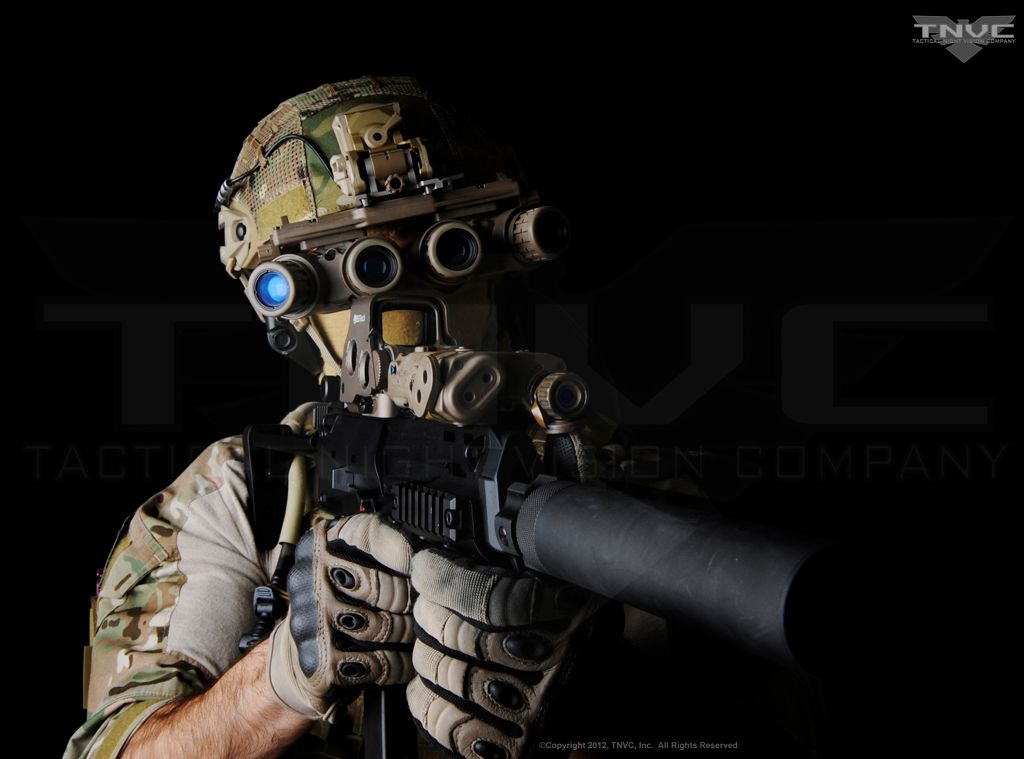
L-3 Warrior Systems, the night vision division of L-3, has developed and fielded one of the biggest innovations in night vision technology with the Ground Panoramic Night Vision Goggle (GPNVG-18). While this goggle doesn’t add thermal fusion or give the operator instant linkup to orbiting drones, it does address the all-important FOV limitation. Recently, TNVC was presented with an opportunity to play with this unique goggle. While I will not divulge any technology beyond the open source information already available, I will provide you a closer look at one of the most innovative and out-of-the-box NVG’s available to our most elite warriors.
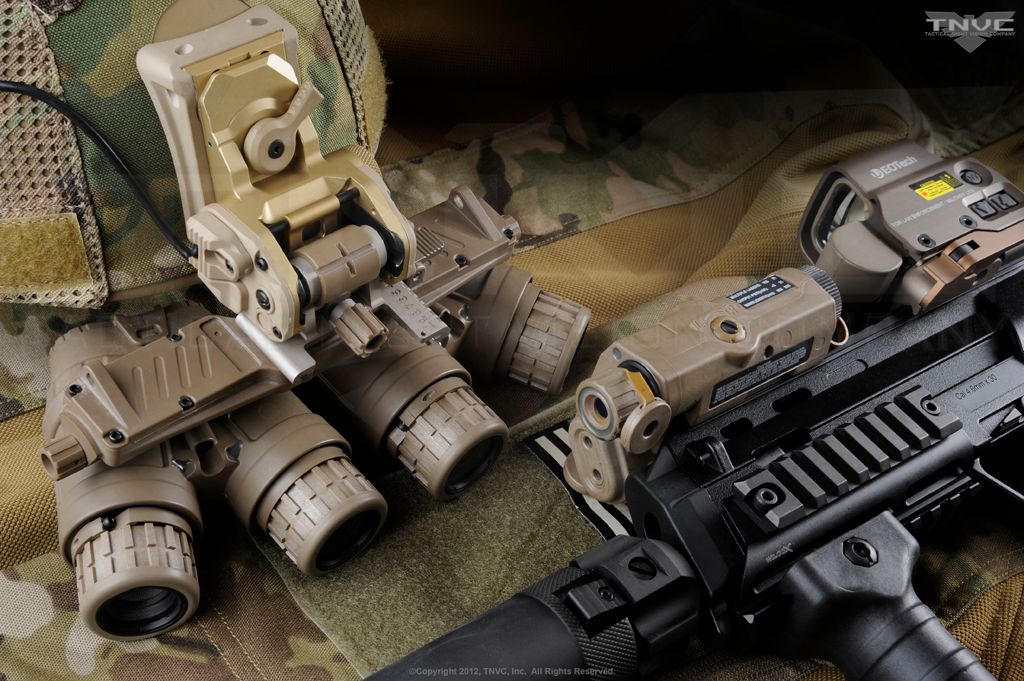
The purpose of the GPNVG-18 is to provide the operator more information under goggles, allowing him to more quickly move through the OODA Loop (Observe, Orient, Decide, Act). The most striking feature of the GPNVG-18 is the presence of four separate image intensifier tubes with four separate objective lenses arrayed in a panoramic orientation. The center two lenses point forward like traditional dual-tube goggles, giving the operator more depth perception, while two more tubes point slightly outward from the center to increase peripheral view. The two tubes on the right and the two on the left are spliced at the eyepieces. The operator sees the two center tubes somewhat overlapping the two outer tubes to produce an unprecedented 97° FOV. This is an absolute game-changer for the SOF community. The two right and two left tubes are housed in merged assemblies and are hung from a bridge similar to ANVIS goggles, giving operators interpuplliary adjustment options. They can also be easily removed and operated as independent handheld viewers. The Bridge assembly features fore/aft adjustment on a ratchet system and can come configured from the factory in two different variants for different helmet mount setups: Ball Detent (ANVIS) or Dovetail (BNVS).
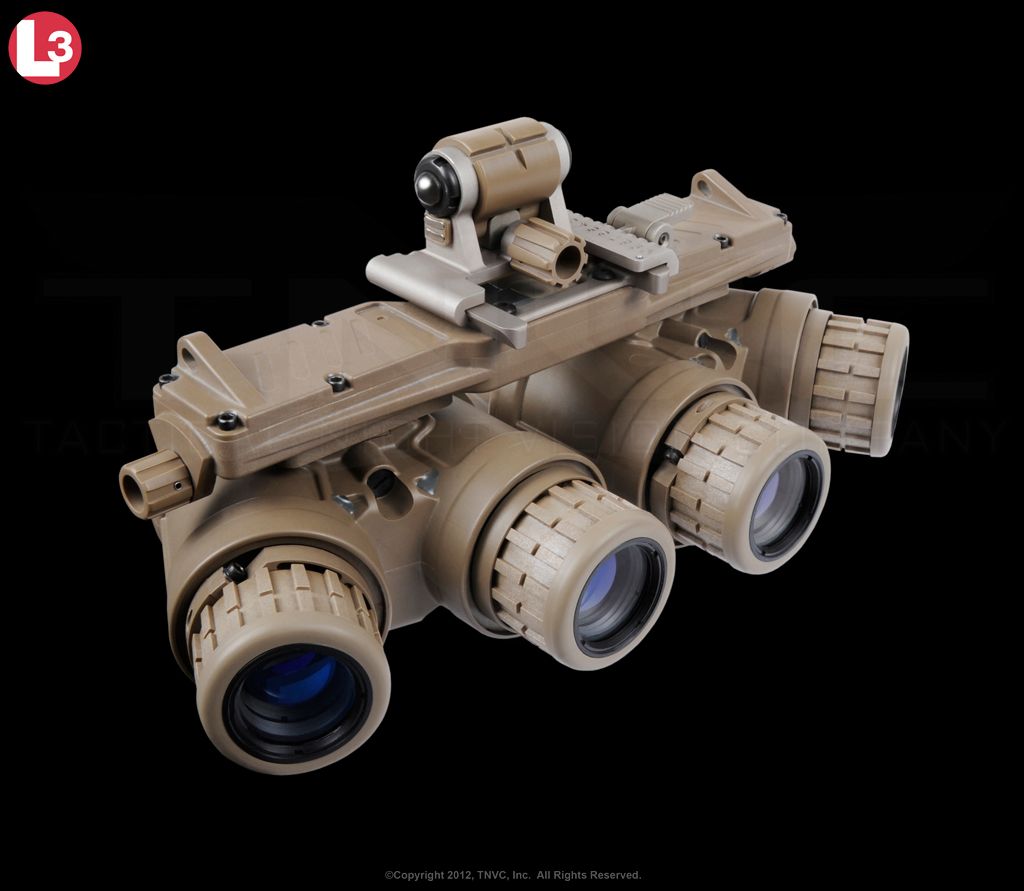
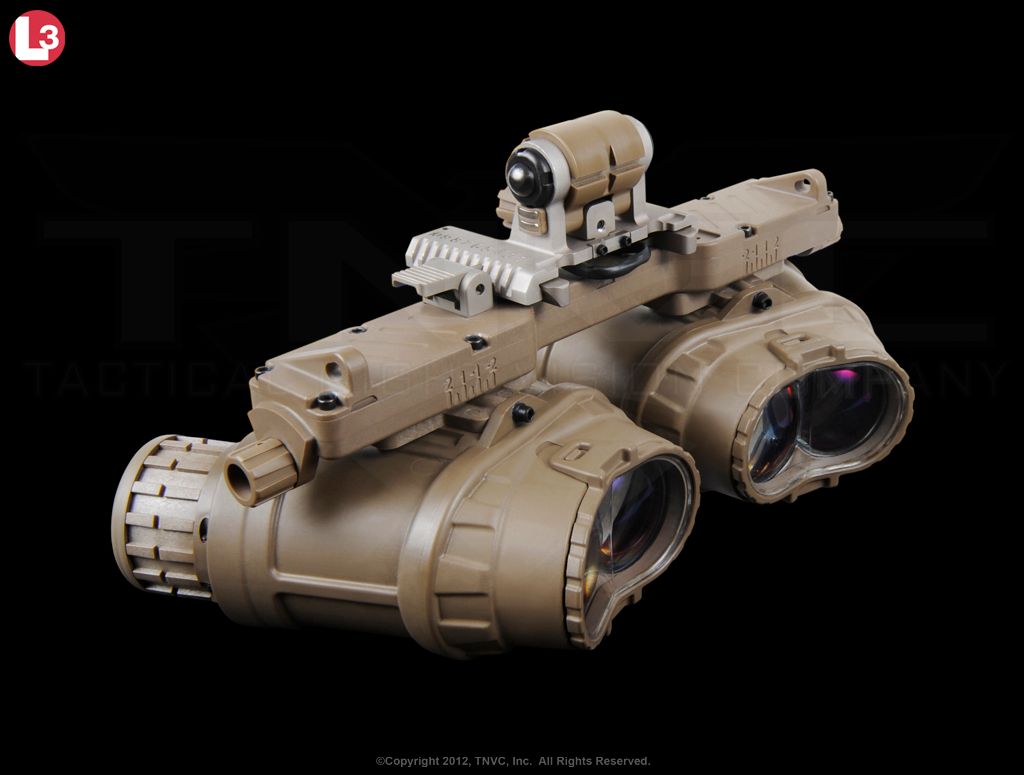

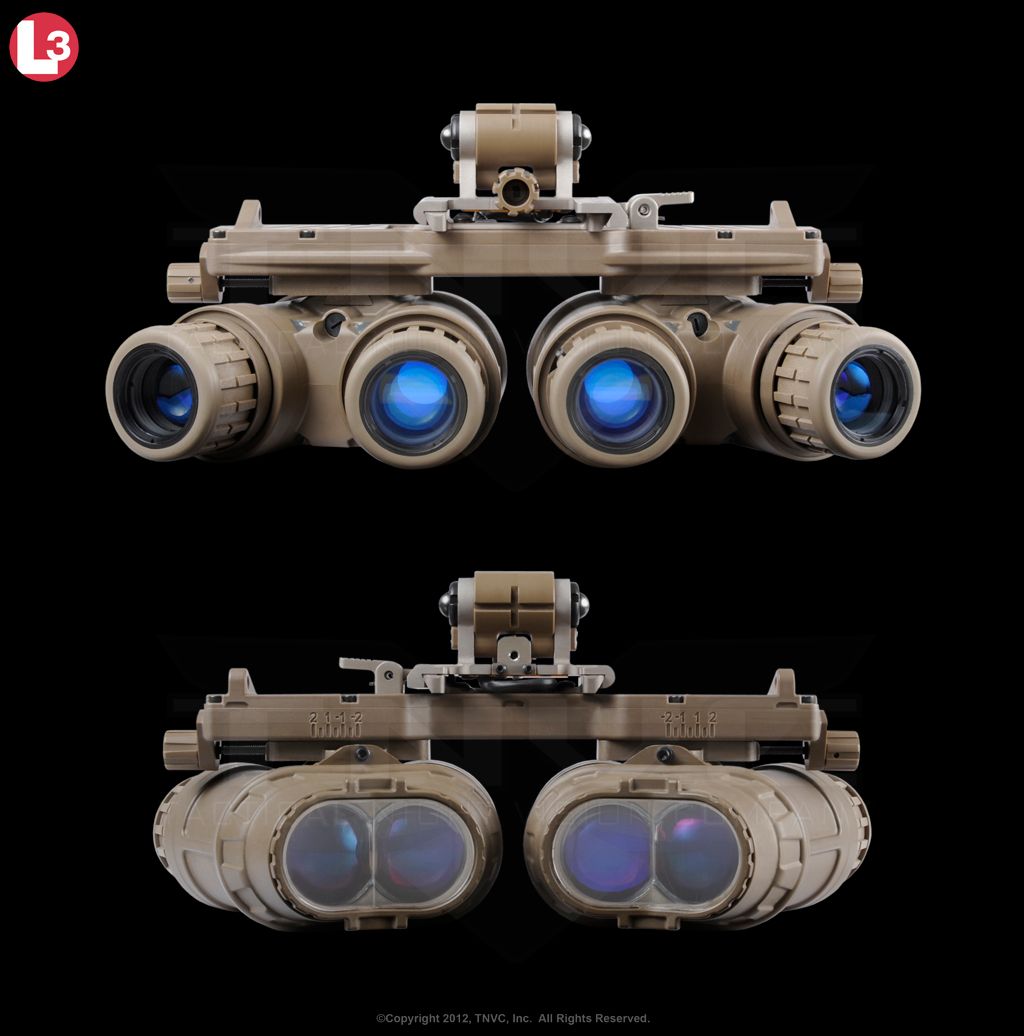
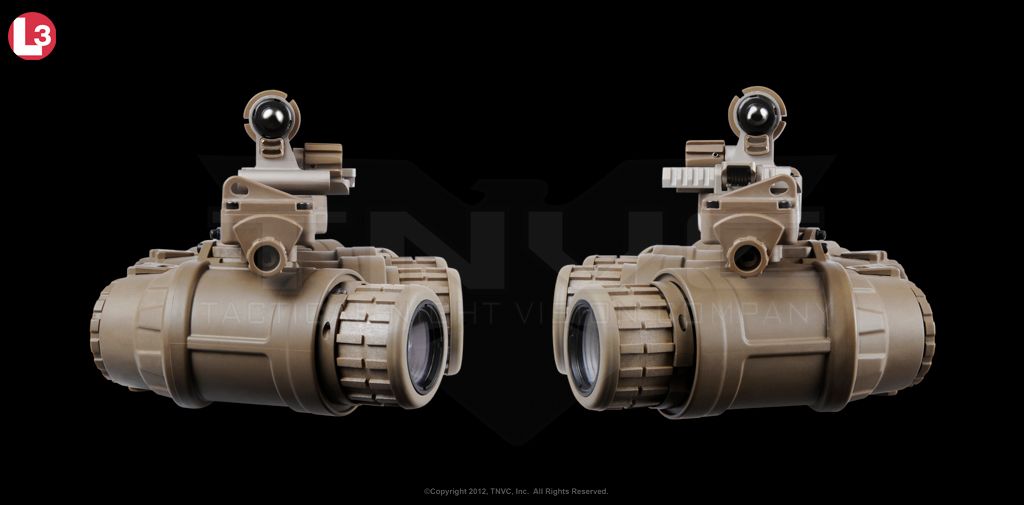
The GPNVG-18 is powered by a remote battery pack, tethered to the unit via a standard ANVIS cable. It comes with a pack that accepts four 3-Volt CR123A batteries that tend to power the unit for about thirty hours (in my trial). The GPNVG-18 can be powered for a shorter amount of time if mounted in the new Wilcox Panoramic Mount designed for a certain military unit. The remote battery pack provides a secondary function as a counterweight, which is needed considering the goggle weighs about 27 ounces.
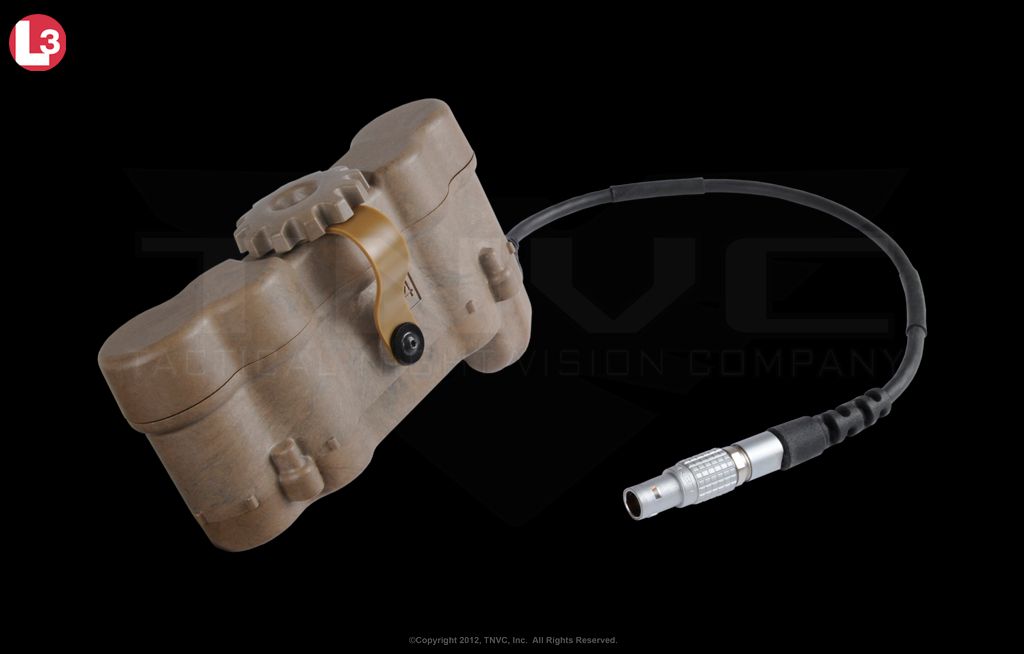
The unit we got to play with was the ANVIS style goggle. Like actual ANVIS goggles, the GPNVG-18 turns off when the goggle is flipped up. Regardless of position, the operator must become used to the width of the device. It obviously protrudes further on both sides than traditional goggles, so care must be given when donning or doffing various mission-essential items, like slings. The goggle has a width of about 8.5”, so stability is a must. That is why it is critical to use hooked bungees on the helmet to make sure it is not bouncing around. Even so, there is very little play in these goggles. One of the issues that plague bridge-type systems is the inherent wobble/rattle found in the connection between the tube housings and the bridge itself. I noticed surprisingly little wobble in the GPNVG-18.

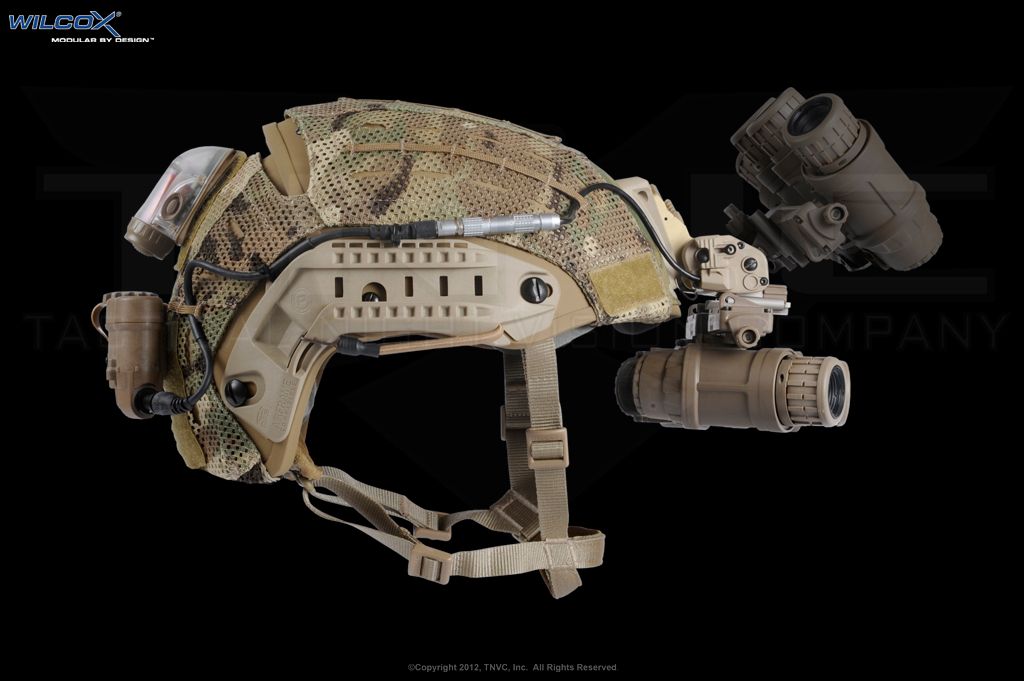
System adjustment and placement is key in providing the best image to the operator. One of the main adjustments for focus in a night vision goggle is the diopter. Diopter focus adjustment is traditionally achieved by rotating a diopter focus ring. This adjusts focus of the goggle as it is in relation to the individual wearer’s eye(s). The challenge presented by the panoramic lens assembly of the GPNVG-18 is that the rear lenses are “fused” together, almost like a prism. This is what gives the operator the overlapping images from the forward and angled tubes. But, it also keeps the goggles from being able to have diopter rings for focus. So, the diopter adjustments are done with interchangeable diopter windows that stand off the lens. The kit comes with various windows that clip onto the rear lens housings and range from +0.5 to -2.5. So, the operator must ensure adjustments are made prior to going outside the wire because doing so in the field requires the other adjustment windows to be carried along.
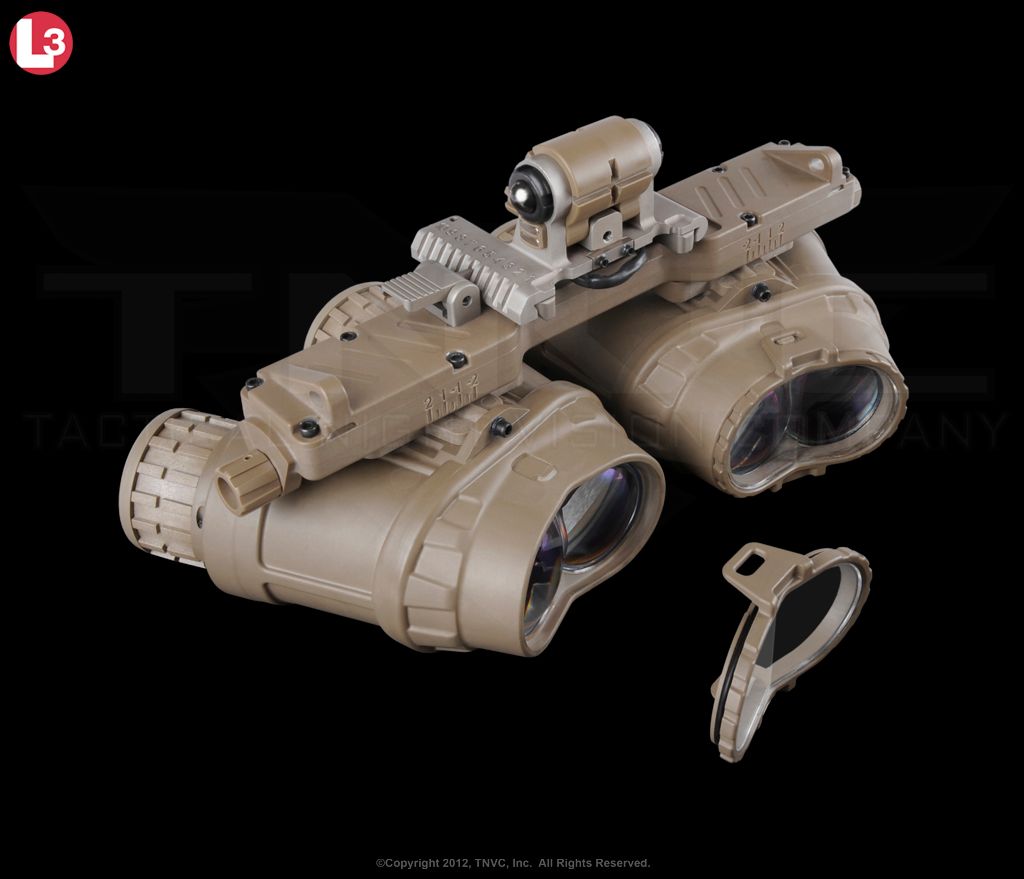
The GPNVG-18 utilizes commercially-available Gen3 18mm MX-10160 image intensifier tubes, which are the same as used by ANVIS goggles. These tubes are good for maintenance because they use L3’s solder-free replaceable tube design. This is a very welcome feature since the modular L3 tubes do not require a whole operation to replace. Some quick work with common tools, and the tube replacement is done. In fact, the entire goggle has been designed with maintenance in mind. One of the biggest issues with NVG’s (and just about any highly technical device) is maintenance of damaged/non-functioning equipment. This is often a lengthy process that requires a unit to be without equipment for a while because devices require specialty tools and facilities for repair. The GPNVG-18’s have a totally modular chassis with a fully serviceable bridge. Turnaround for goggle repair is much faster than that of other specialty goggles like the AN/PVS-15.
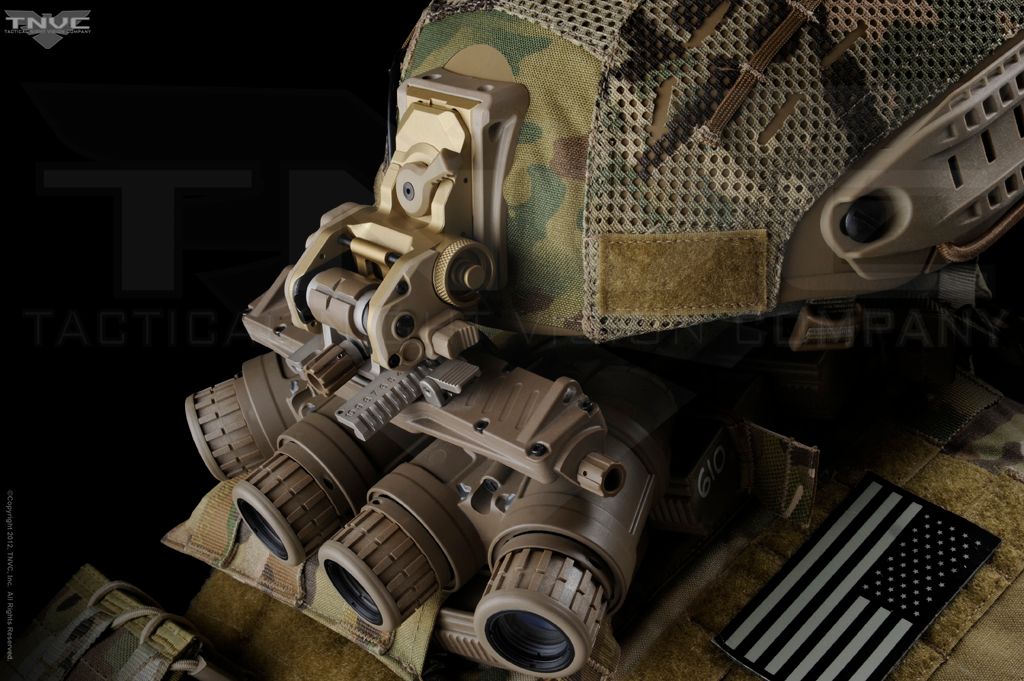
Using the GPNVG-18 is a very unique experience. For someone who has grown accustomed to the narrow FOV of standard goggles, the night looks completely different with 97°. There is no loss of visual acuity in the outer channels, so image looks as crisp in the widest parts as it does in the traditional “zone 1.” There is a slight wave of blocked image in the overlap, but it is minor and you only “see” an overlap of three images since your brain melds the two center tubes (just like any binocular system). After wearing the goggle for about five minutes, your brain does not even see the slight black semi-circle where the overlap occurs. The increased situational awareness is immediately apparent. The first thing I thought when donning the GPNVG-18’s was: “Wow, these are going to save a lot of good-guy lives and end a lot of bad-guy lives.” As I said earlier, I am not a fan of CQB under goggles. But, this is a game-changer. Room clearing becomes a much more feasible task with the GPNVG-18.
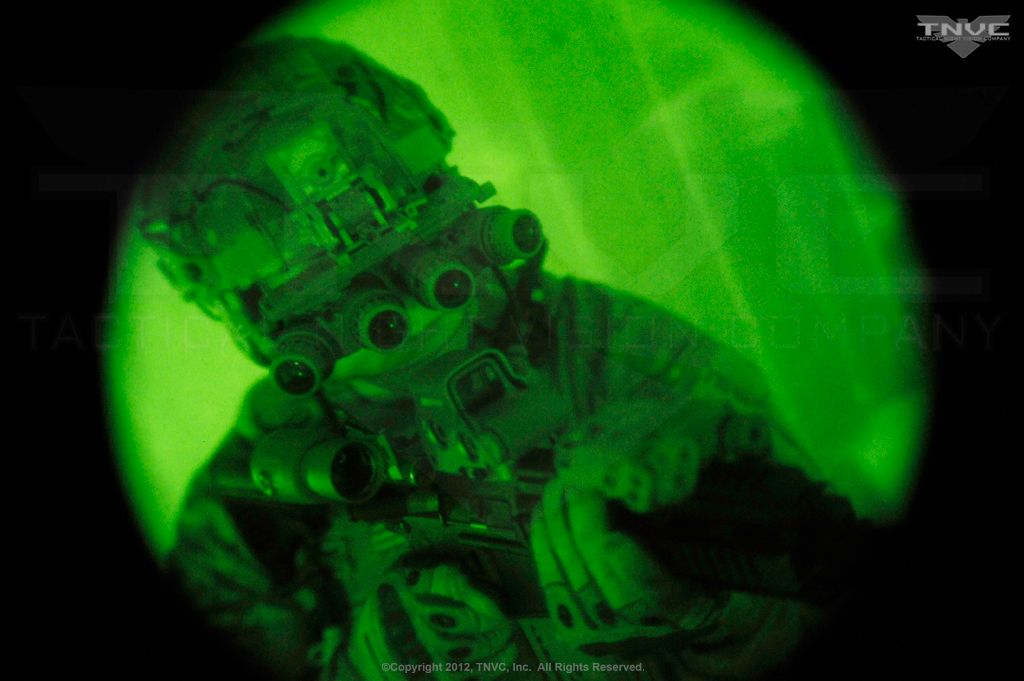
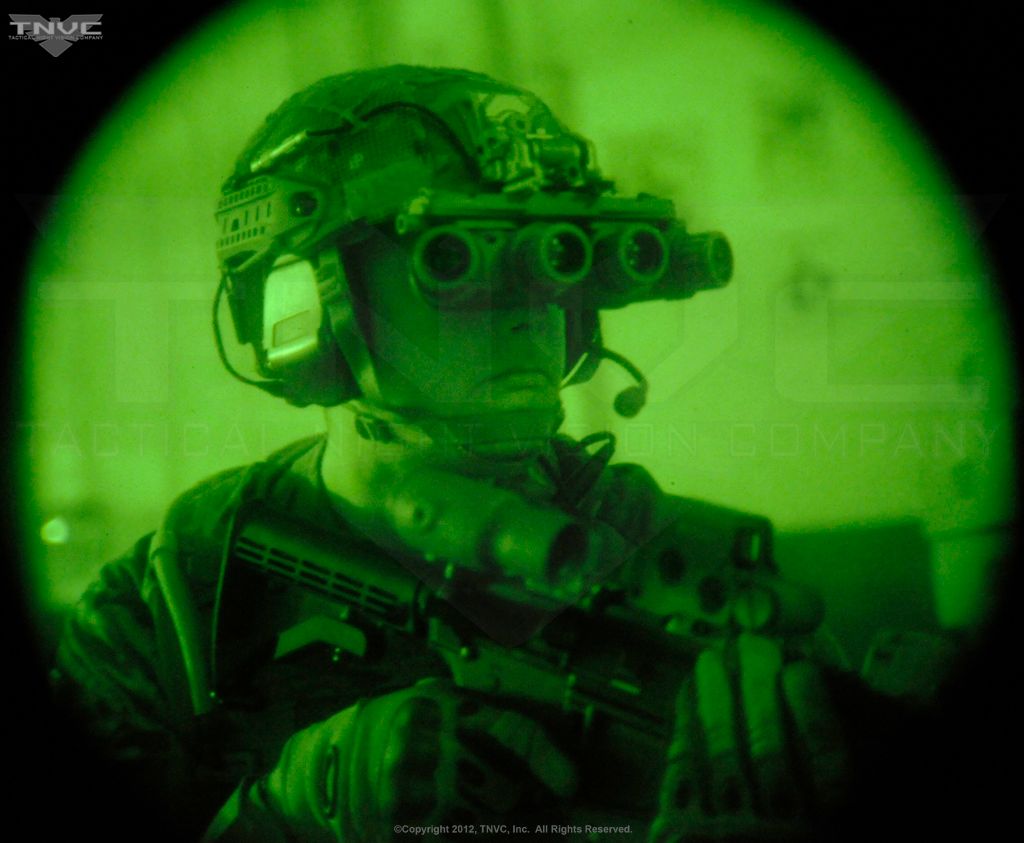
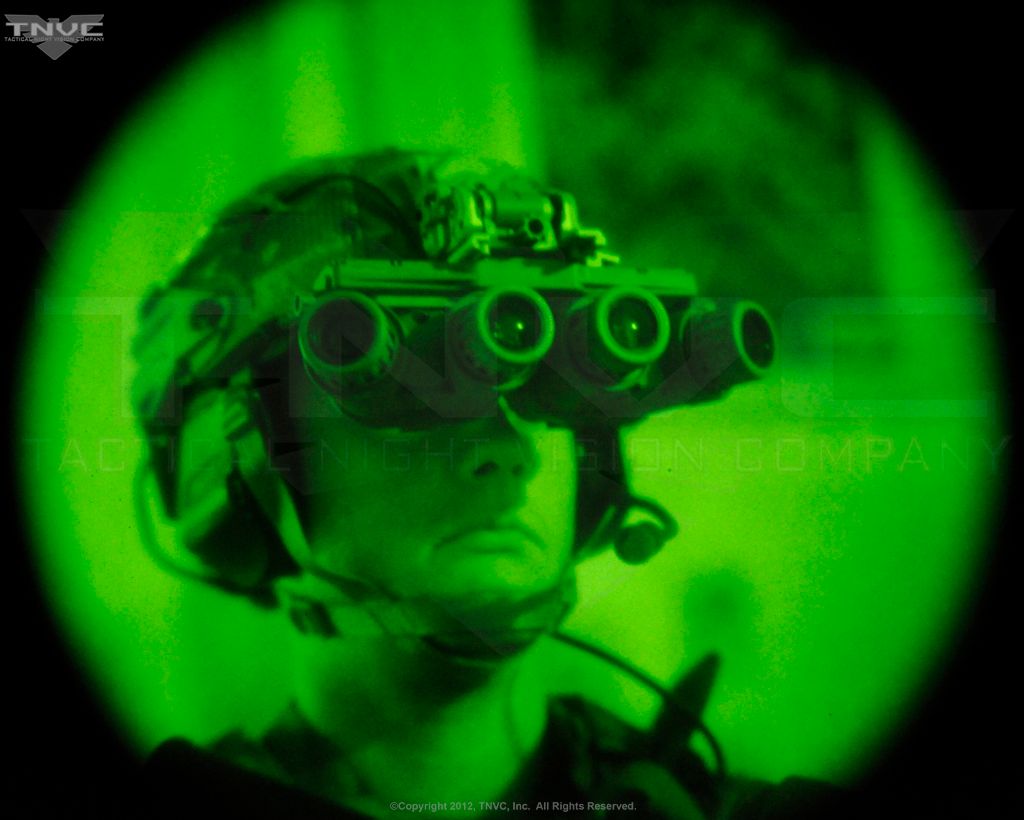
As soon as the threshold of a door starts to be breached, the fight is on. Every detail in a room, no matter how insignificant, must be immediately noticed and processed. Obviously, the operator is looking for threats and needing to prioritize them so they can be processed accordingly. To quote a highly regarded instructor and personal friend, “You have to see the motherf*cker, shoot the motherf*cker.” The operator’s brain has to be able to instantly process and filter everything he sees on the other side of that door to make sure he can see and shoot the motherf*cker(s) before they shoot him. At CQB ranges, everyone is a sniper and speed is of the essence. If you do not process threats immediately, you are in trouble. Obviously, the ability to see as much as you can is critical. That is exactly what the GPNVG’s allow you to do. Coming through the door, you can now see multiple threats where before, only one might be visible through the toilet paper tube. Going through some exercises, I was able to immediately see and “engage” multiple bad guys. A traditional goggle causes me to have to scan a lot more with my whole head, giving me way more to think about and choreograph while moving into a small room populated with people that want to kill me. Moving my head so much/so quickly can cause things to be missed. After all, the world is completely green under goggles and things are identified based on contrast. The real world is not like a shoot house. Rooms are often filled with scattered debris, garbage, furniture, and other assorted crap that tends to blend together under goggles- especially when you also have to deal with the fixed plane focus of an NVG. I might scan my sector, turning my head in a 90° arc, see something that might resemble a threat, orient towards it only to see that it is not even a person, all while getting shot from someone “off camera.” That is a really bad situation. But, the GPNVG’s allow me to see such a wide FOV that I am not wasting time panning my head back and forth as I enter the room. I immediately pick up persons of interest and can determine if they are threats.
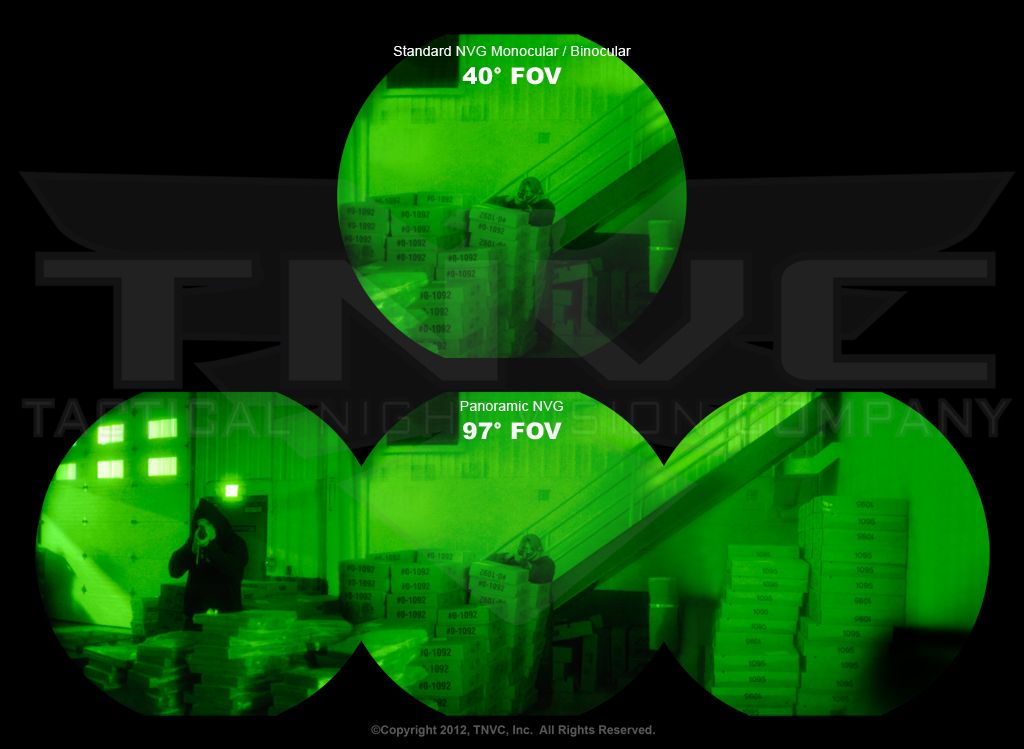
Another aspect worth mentioning is the lack of fuzzy image on the peripheral of the tubes. Sure, like any tube, edge to edge clarity is not perfect. But, there is no issue with the merging of images from the tubes since there is enough overlap to keep you from getting any fuzzy sections in the middle.
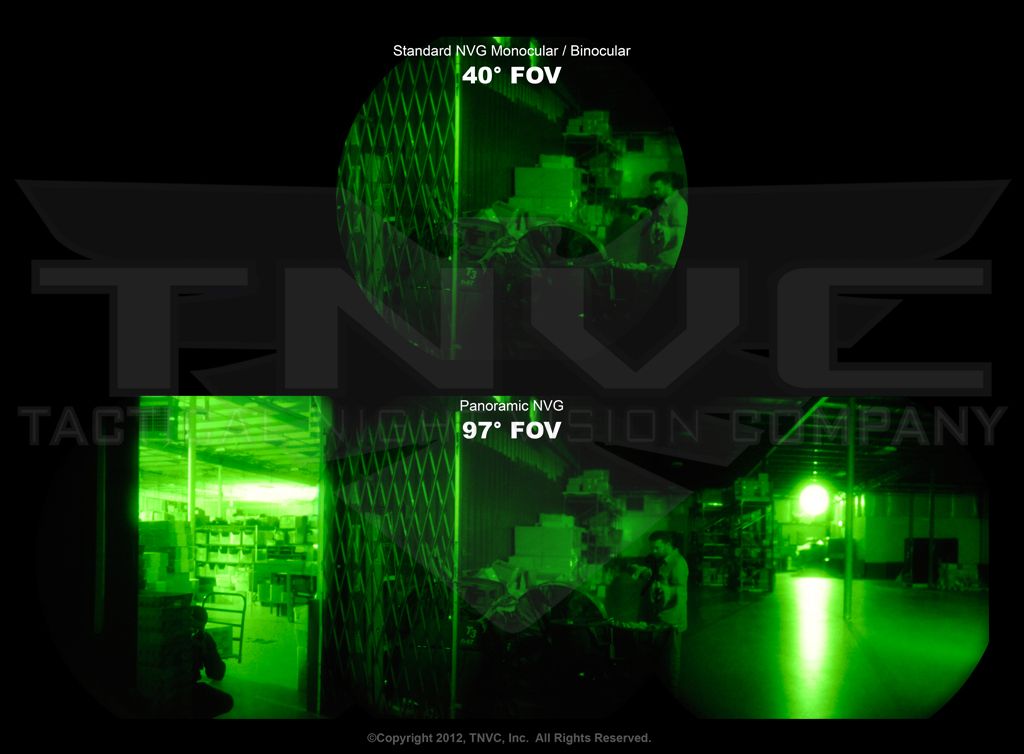
Driving is another place where these goggles shine. The GPNVG-18 is a ruggedized version of the original PNVG (Panoramic Night Vision Goggle) AN/AVS-10. Obviously, it is imperative for pilots to see as much as possible when flying aircraft. This is especially true of special operations aviators that push the limits of flight, often by taking aircraft dangerously close to the earth or other obstacles not conducive to keeping a bird aloft. The more information they can have and process, the better. Like the PNVG, the GPNVG provides a driver with all sorts of information they would not normally see without panning their head behind the wheel. Practically the full width of a car’s windshield is now visible. In fact, I could use the side view mirror on the driver’s side without turning my head. The dash instrument panel is visible under the goggles (the same as it is when using traditional goggles).
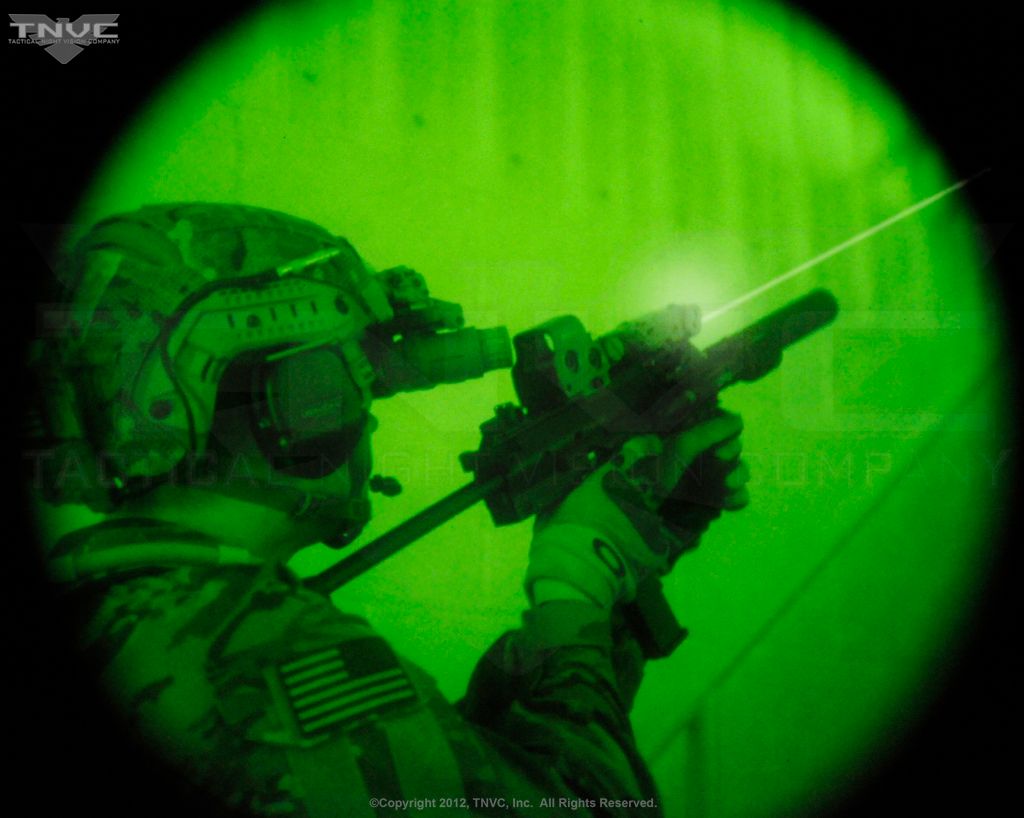

The weight of the GPNVG’s is not as much of an issue as I thought it would be. Sure, they are among the heaviest goggles available, but they are still within reason. When you consider they weigh less than 1oz more than the AN/PVS-21, it starts to put it in perspective. Sure, it will begin to get uncomfortable over time, but again, if you are wearing these things, you did not volunteer for a job that champions comfort. But honestly, they are not that bad. I did find it easier to run them with a counterweight, though. The four CR123A batteries in the remote pack did help, but they did not provide enough weight for my liking. But, what is nice about the pack is that it is low profile and allows you the space to add additional counterweights as needed. I did find it a bit more difficult to deal with the goggle when it was in the flipped up stowed position. Overall, it sticks out more and the cantilevered weight makes it a bit more unwieldy and obtrusive. I found it more difficult to climb ladders outside buildings with the goggle on the head like this. But, nothing is perfect and you have to weigh the benefits of using various tools. In this case, the ability to see with a panoramic night vision goggle far exceeds the not-so-ideal stowage space.
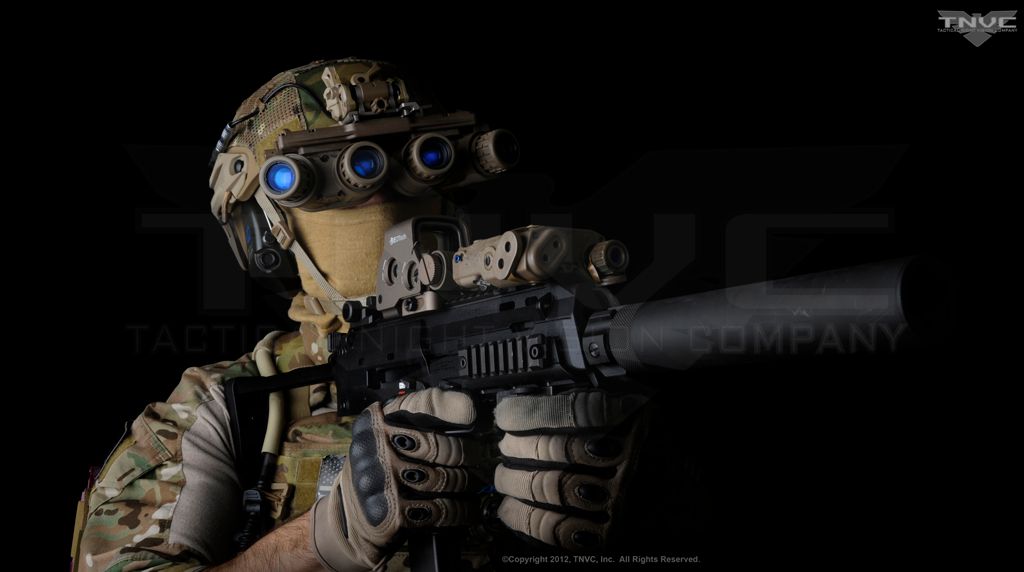
The GPNVG-18 is representative of pure out-of-the-box thinking. While they are not using any of the new “groundbreaking” fusion technology or jacking you into a satellite feed, the simple fact that they allow the operator to see more is a godsend. After all, NVG’s are there to allow you to see at night. So, the more you see, the better off you are. It is as simple as that. These goggles give the operator the ability to do more while using the same visual FOV he has during the day, at night. The GPNVG-18 is an extraordinary development in night vision application, giving the modern Warfighter more combat options and increasing his lethality. The ability to stay blacked out even indoors, is a huge benefit. Not only does it keep the operator safer by presenting less of a target to the bad guys during CQB, but it increases the speed and efficiency in which the bad guys can be killed. Visibility outdoors is much improved over traditional goggles. Obviously, the panoramic visuals provide the operator with way more information in wide open terrain than the legacy goggles’ restrictions. This makes terrain navigation much easier. It also keeps the operator from having to move his head so much during observation. Since people’s vision is automatically attracted to movement at night, this benefit provides more operator safety.

While technology will continue to evolve in the arena of image intensification, it is amazing what a difference can be made with the simple concept of adding more tubes to give the operator a wider FOV. The L-3 GPNVG-18’s are currently available to U.S. Military and Law Enforcement Agencies only.
PRICE ON REQUEST FROM MIL/LE AGENCY LETTER HEAD
-
6 December 2012, 12:43 #2
Very interesting. Thank you for the thorough writeup.
-
6 December 2012, 14:02 #3
This might be one of the best posts ever! Thanks, just awesome.
-
7 December 2012, 14:32 #4
 Dealer
Dealer
- Join Date
- Dec 2012
- Location
- Seattle, WA
- Posts
- 26
- Downloads
- 0
- Uploads
- 0
Latest price I heard from a civilian buyer was $43K. Insight had signed off of the sale, but rescinded approval at the last minute, lol.
Big drop from $68K just a few years backhttp://www.weaponoutfitters.com/
https://www.facebook.com/weaponoutfitters
-
7 December 2012, 17:54 #5
Wow, all that for 43K? I'd like to order a dozen please...is free shipping included with that?....All kidding aside, I wish I was young and back in the military. They have the coolest stuff. This would be unthinkable then, but now the way technology changes every day, nothing seems outside the realm of reality. No more "what do you think, they'll think up next". Now it's "when do you think they'll have (fill in the blank). Great write up! Very interesting reading.
FT
-
7 December 2012, 19:38 #6
$43k??!! that's just ridiculous.
I'd rather be judged by twelve than carried by six. - Anonymous
-
9 December 2012, 13:11 #7
 Dealer
Dealer
- Join Date
- Dec 2012
- Location
- Seattle, WA
- Posts
- 26
- Downloads
- 0
- Uploads
- 0
$43K this year, tentatively approved for civilian sale... so don't forget that back when these things were top secret and elite commando use only years ago the price must have been much, much more! The cool guys get gadgets years, sometimes decades before the general public even knows about their existence. If you know what to look for, it is sometimes mind boggling when you see stuff that some units had before everyone else.
Absolutely worth the money for the people who use them though. The author of this article, "Chip" Lasky is a retired SOF soldier himself and spells out the huge, life saving advantages these provide American warfighters.
Given that foreign countries also having their own NOD technologies, it's nice to know that American engineering still leads.http://www.weaponoutfitters.com/
https://www.facebook.com/weaponoutfitters




 Reply With Quote
Reply With Quote





